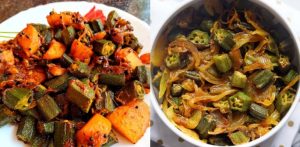The spiced potato filling is spread on one half of the dosa
Indian food is one of the most enjoyable cuisines but how do some of its most popular dishes look through the use of AI?
Artificial intelligence has become a prominent creation tool in both a written and visual sense.
Although there are popular dishes, we wanted to see how they turn out using an AI tool.
Using Neural.Love, we generated images of popular Indian dishes to see how accurate their depictions are as well as the different presentations of classic foods.
Masala Dosa
Masala dosa is a popular vegetarian dish in South India that is commonly served for breakfast or as a snack.
It consists of a thin, crispy crepe made from a batter of fermented rice and lentils that is filled with a flavourful mixture of spiced potatoes, onions and sometimes other vegetables such as peas or carrots.
The filling is usually made by cooking boiled and mashed potatoes with a blend of aromatic spices like cumin, mustard seeds, turmeric and coriander powder.
The mixture is then seasoned with fried onions, ginger, garlic and fresh herbs like curry leaves and coriander leaves.
The spiced potato filling is spread on one half of the dosa, which is then folded over and served hot with a side of coconut chutney and sambar.
The dish is a popular street food in India and is also widely enjoyed in Indian restaurants around the world.
Chaat
Chaat consists of a variety of savoury snacks and appetisers that are usually served in small portions.
It is a quintessential part of Indian cuisine and is loved for its bold flavours and unique combination of sweet, spicy, tangy and savoury tastes.
Chaat typically includes a base of crispy fried dough wafers, known as papdi, puri, or sev, which are topped with a variety of ingredients such as boiled potatoes, chickpeas, onions, tomatoes and chopped coriander.
The toppings are then drizzled with a range of chutneys, such as tamarind chutney, mint chutney and yoghurt sauce, which add a tangy and sweet flavour to the dish.
Some popular variations of chaat include bhel puri, papdi chaat and samosa chaat.
Chaat is a beloved snack food in India and is often eaten as a light meal or a snack between meals.
Its unique blend of flavours and textures makes it a delicious and satisfying option for foodies looking to explore the diverse and rich cuisine of India.
Butter Chicken
Butter chicken is a classic when it comes to Indian cuisine.
The dish is made by marinating boneless chicken pieces in a mixture of yoghurt and spices, such as ginger, garlic, cumin, coriander, turmeric and garam masala, before cooking them in a tandoor oven or on a grill.
The cooked chicken is then simmered in a rich and creamy tomato-based sauce that is flavoured with butter, cream, and a range of aromatic spices such as fenugreek leaves and cardamom.
The sauce is usually made by cooking onions, garlic and ginger in butter until they are caramelised, then adding pureed tomatoes and spices to create a thick and flavorful sauce.
Butter chicken is typically served with naan bread or rice and is often garnished with fresh coriander or cream.
It has a mild, yet complex flavour that combines the sweetness of the tomato sauce, the richness of the cream and butter, and the warm and earthy spices used in the marinade and sauce.
Biryani
Biryani is believed to have originated in the Indian subcontinent but has since become a popular dish in many countries around the world.
Biryani is typically made by cooking long-grain basmati rice with a variety of aromatic spices, such as cardamom, cinnamon, cumin, cloves and bay leaves.
The rice is usually cooked separately from the meat or vegetable filling, which is first sautéed with onions, ginger, garlic and tomatoes, and then seasoned with a blend of spices.
The cooked rice and filling are then layered in a large pot or baking dish, with the rice forming the bottom layer and the meat or vegetable filling forming the top layer.
The dish is then typically covered and cooked on low heat or in an oven until the flavours have combined and the rice is cooked through.
Biryani is often garnished with fried onions, fresh herbs and sometimes nuts or raisins. It is usually served with a side of raita or chutney.
There are many different variations of biryani, with different regions and cultures adding their own unique twist to the dish.
Some popular types include chicken biryani, beef biryani, vegetable biryani, and Hyderabadi biryani, which is known for its spicy flavour and use of saffron and rose water.
Saag Paneer
This vegetarian dish is typically prepared by first blanching spinach leaves and then pureeing them with spices such as cumin, coriander and turmeric.
The pureed spinach is then simmered with paneer, which is usually cut into small cubes.
The paneer is usually lightly fried beforehand to give it a slightly crispy exterior and help it hold its shape in the dish.
Other ingredients, such as onions, garlic and ginger, are often added to the dish to enhance its flavour.
The resulting dish is a rich and creamy spinach sauce that is flavoured with the warm spices and studded with tender chunks of paneer.
Saag paneer is a popular and beloved dish in Indian cuisine due to its delicious combination of textures and flavours.
The creamy and comforting spinach sauce pairs perfectly with the firm and slightly chewy paneer, while the spices provide a warm and earthy undertone.
Samosa
Samosas are a firm favourite across the world.
It is a triangular-shaped pastry that is usually filled with a savoury mixture of spiced potatoes, peas, onions, and sometimes meat or cheese.
The pastry dough is typically made from flour, water and a little bit of oil, and is rolled out thin and then cut into small triangles.
The filling is then placed in the centre of each triangle, and the pastry is folded over to form a triangular-shaped pocket.
The edges are usually sealed by crimping them with a fork or by applying a little water or flour paste.
The samosas are then typically deep-fried until they are crispy and golden brown. They are often served hot and accompanied by various chutneys or sauces, such as mint chutney or tamarind chutney.
Aloo Gobi
Enjoyed by vegetarians and non-vegetarians alike, aloo gobi is diced potatoes and cauliflower florets are cooked with a blend of spices.
This includes cumin, coriander, turmeric, garam masala and chilli powder.
The dish is typically cooked until the vegetables are tender and lightly browned and may be garnished with fresh coriander leaves or chopped green chillies.
It is often served with rice, naan or roti.
Gulab Jamun
This popular Indian dessert is made by frying small balls of dough and then soaking them in a sweet syrup.
The dough is usually made from milk powder or khoya that is mixed with flour and a leavening agent, such as baking powder.
The dough is then shaped into small balls and fried in hot oil until they are golden brown and crispy on the outside, while remaining soft and spongy on the inside.
The fried balls are then soaked in a sugar syrup flavoured with cardamom, saffron and rose water, which gives them a sweet and aromatic taste.
Once the gulab jamuns have soaked up the syrup, they are typically served warm or at room temperature, garnished with chopped nuts such as pistachios or almonds.
This beloved dessert is commonly served at festivals, weddings and other special occasions.
Tandoori Chicken
Tandoori chicken is made by marinating chicken in a blend of yoghurt and spices, including ginger, garlic, cumin, coriander, turmeric and cayenne pepper.
The marinated chicken is then roasted in a tandoor oven.
This cooking method gives the chicken a distinctive smoky and charred flavour, and the yoghurt in the marinade helps to tenderise the meat and keep it moist.
Tandoori chicken is often served with naan, rice and a variety of chutneys.
It is a popular dish in many Indian restaurants and can be found in many different variations, including bone-in and boneless, spicy or mild and with or without skin.
Daal Makhani
Originating in the Punjab region of India, daal makhani is made from black lentils and kidney beans, slow-cooked with a blend of spices, herbs and cream.
The pulses are soaked overnight and then boiled until they become soft and creamy.
The lentils and beans are then simmered in a spiced tomato-based sauce, which includes a blend of spices such as cumin, coriander, turmeric, garam masala and red chilli powder.
It is then finished with a generous amount of cream or butter, which adds richness and creaminess to the dish.
It is often served with rice or naan and garnished with fresh coriander leaves.
This AI tool was impressive in the way images were generated.
They were presented alongside various side dishes, showcasing how impressive AI is and can be in the future.







































































